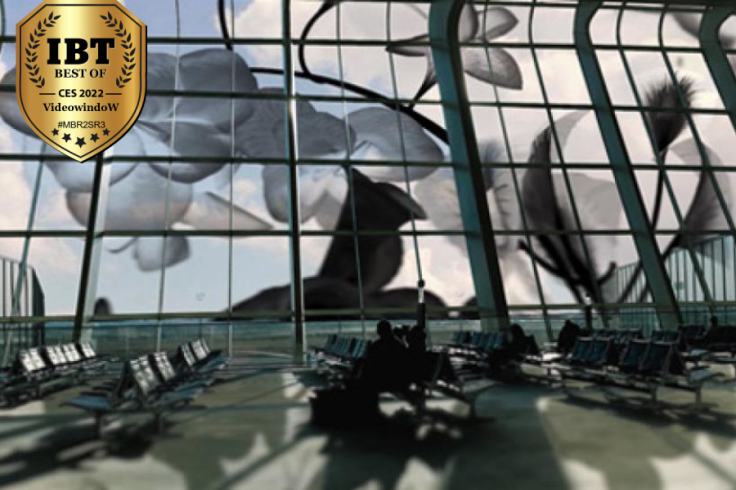CES 2022: VideowindoW Turns Glass Into Video Screens
VideowindoW turns glass into a screen by adjusting the transparency of the surface, which also allows it to double as glare and climate control for a variety of settings.
It works by dividing glass into multiple small segments, liquid crystal display modules, like pixels, unlike any existing tintable glass today. The transparency of each of these small segments ranges from nearly black to clear, using daylight as black light, which allows the glass to display images. The segments also change at high speeds, allowing for video content.

Each module has a light sensor and uses algorithms to interpret real-time data, including exterior luminesce and temperature, which allows it to display content inside while factoring in outdoor conditions.
The segments adjust to exterior daylight and are designed for airports, hospitals, schools, corporations, co-working spaces, museums, transportation hubs, and malls, among other places. Ideally, it is meant for spaces where there are a lot of windows, and it installs easily into these spaces. Displaying and interacting with a game using the glass is also possible with the right equipment.
It is meant to be implemented into larger spaces as a larger installation, but it can also be a stand-alone module to fit into smaller spaces.
VideowindoW triples as glare control, video display, and insulation that makes it sustainable as well, paying for itself. It is less invasive than an LCD screen and reduces the carbon footprint of a building. The possibilities with VideowindoW are endless, from advertising to art to supplying comfort to patients at a hospital, motivation to employees at work, or emergency information in any setting.
The VideowindoW is already in use in airports in Europe and preparing to launch in the U.S. in 2022. The company is headquartered in Delft, South Holland.

© Copyright IBTimes 2024. All rights reserved.























